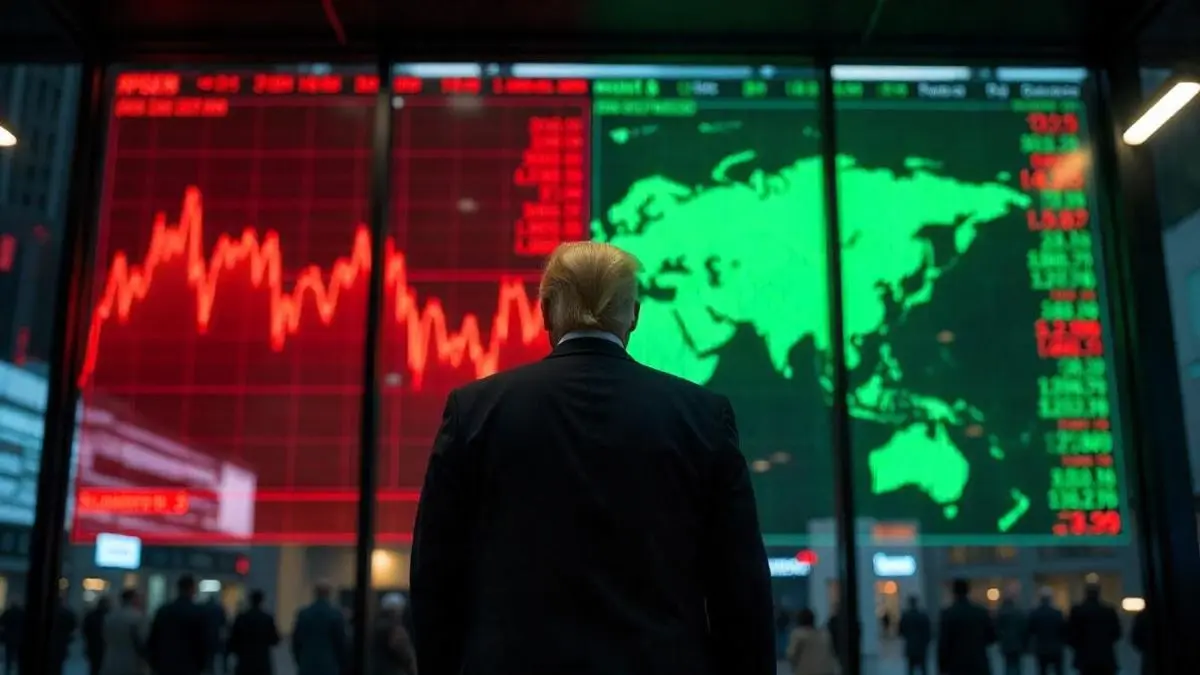Updated 2 April 2025 at 22:06 IST
Trump’s Tariff Move Puts Indian Pharma, Auto & Electronics In The Crosshairs—What’s Next?
As US President Donald Trump’s reciprocal tariffs take effect on April 2, India braces for potential trade disruptions. Experts weigh in the potential fallout.
- Republic Business
- 5 min read

President Donald Trump ’s much-anticipated reciprocal tariffs will come into effect on April 2, a day he has provocatively termed "Liberation Day." With global markets on alert, India—one of the US's largest trading partners—could see repercussions across multiple sectors.
According to a report by Motilal Oswal Financial Services, while the overall impact on India may be contained, key industries are expected to feel the heat. The U.S. accounted for $124 billion in bilateral trade with India in 2024, with India exporting $81 billion worth of goods while importing $44 billion. This surplus of $37 billion is now under scrutiny as Trump’s policies aim to recalibrate trade balance
Key Indian Exports to the U.S.
India’s top exports to the U.S. include: Electronics, Gems & Jewelry, Pharmaceuticals, Machinery for nuclear reactors & Refined petroleum product
With tariffs poised to impact these sectors, the Stock Market ’s response remains unpredictable.
Stock Market Resilience Amid Uncertainty
Despite fears of a tariff-triggered sell-off, Indian markets went up on April 1, the first trading day of FY2026. Benchmark indices, Sensex and Nifty50, rebounded after an initial slump, led by banking and IT stocks.
Sensex: Rose by 592.93 points, closing at 76,617.44
Nifty50: Gained 166.65 points, closing at 23,332.35
However, with investors awaiting Trump’s final tariff list, market watchers remain cautious about a potential Friday downturn.
Expert Insights: Sectors Most Vulnerable to Tariffs
Market analysts caution that certain Indian industries are at significant risk. Sudeep Shah, Deputy Vice President & Head of Technical & Derivatives Research at SBI Securities, outlined sectors likely to bear the brunt.
Shah elaborated, “One of the major sectors that we export to the U.S. is electronics, pharma, and even agricultural products. In agriculture, dairy products, fish, meat, and processed seafood will be impacted the most. Additionally, the jewelry sector, including diamonds and gems, could also face challenges.”
He further emphasized that, “The chemical, pharma & IT space also has a significant differential gap, which means it will be a sector to watch as well.”
Electronics: The most vulnerable category, given its high exposure to the US market.
Pharmaceuticals: A 9-10% tax differential could impact exports, particularly for generic drug manufacturers.
Jewelry & Diamonds: India’s diamond and jewelry exports, already taxed at higher rates than imports, may see further pressure.
Agriculture & Dairy: Products like dairy, processed seafood, and meat could face substantial tariff hikes.
Auto & Auto Components: With a 23% differential, this sector is at high risk, impacting brands like Tata Motors and Maruti.
Shah also emphasized that market volatility could persist as investors seek clarity on sector-specific tariffs. “If we see a gap-down opening of 200-300 points, a recovery may follow once uncertainty subsides,” he noted.
Economic Ramifications: Can India Absorb the Shock?
Sugandha Sachdev, Founder of SS WealthStreet, warned of broader economic consequences. “President Trump's second-term trade policies have ignited a global tariff war, sending shockwaves through international markets,” she said. “For India, with the U.S. accounting for 17.7% of total exports in FY24, the impact could be substantial.”
Sectoral Exposure to Tariffs:
Chemicals & Pharmaceuticals: 8.6% differential
Textiles & Clothing: 1.4% differential
Jewelry & Precious Metals: 13.3% differential
Machinery & Computers: 5.3% differential
Electronics: 7.2% differential
Automobiles: 23.1% differential
(Data By Sachdev)
Sachdev estimated that these tariffs could cost India approximately $7 billion annually, reducing GDP growth by 50-60 basis points.
She said, “We anticipate that the imposition of US tariffs will disproportionately impact several key Indian sectors.” Pharmaceuticals, while not currently subject to tariffs, could face significant challenges if restrictions are imposed on generic drug exports. The gems and jewelry sector is particularly vulnerable, with 30% of India’s finished jewelry exports headed to the US. “
Advertisement
“Any tariffs on cut and polished diamonds, which currently enter the US duty-free, could severely disrupt the trade,” Sachdev added.
Meanwhile, IT services—one of India's biggest export industries—has already seen the Nifty IT index drop over 14% since January due to tariff-related concerns.
The automobile sector is also under pressure, with a 25% tariff on imported cars and auto parts set to take effect on April 3rd, impacting auto parts exports worth $2.2 billion.
Advertisement
“Although these tariffs aren’t India-specific, they will likely to hit key players in the auto industry” Sachdev noted. Electronics, with over 50% of its exports going to the US, faces the greatest risk, as tariffs could make Indian products less competitive.
On the other hand, textiles may see limited impact due to a low tax differential with competitors.”
Government’s Next Moves: Negotiations on the Horizon?
The Indian government is expected to engage in diplomatic negotiations to mitigate tariff impacts. Trade experts suggest that New Delhi may push for exemptions or bilateral deals to cushion the blow on key industries.
“the Indian government is likely to negotiate trade deals to mitigate these effects, and its success will determine the long-term impact of these tariffs on the economy.,” said Sugandha Sachdev.
As negotiations unfold, all eyes remain on Trump’s policy decisions and India’s countermeasures. While markets may experience short-term volatility, the long-term outlook will hinge on trade diplomacy and corporate adaptability.
Navigating a Trade War Landscape
With Trump’s tariff policy now in play, India's economy faces a delicate balancing act. While certain sectors brace for impact, strategic government intervention and investor resilience could help mitigate long-term disruptions. As the dust settles, stakeholders—from exporters to stock market investors—will be closely watching how this trade war unfolds.
Published By : Gunjan Rajput
Published On: 2 April 2025 at 18:36 IST
